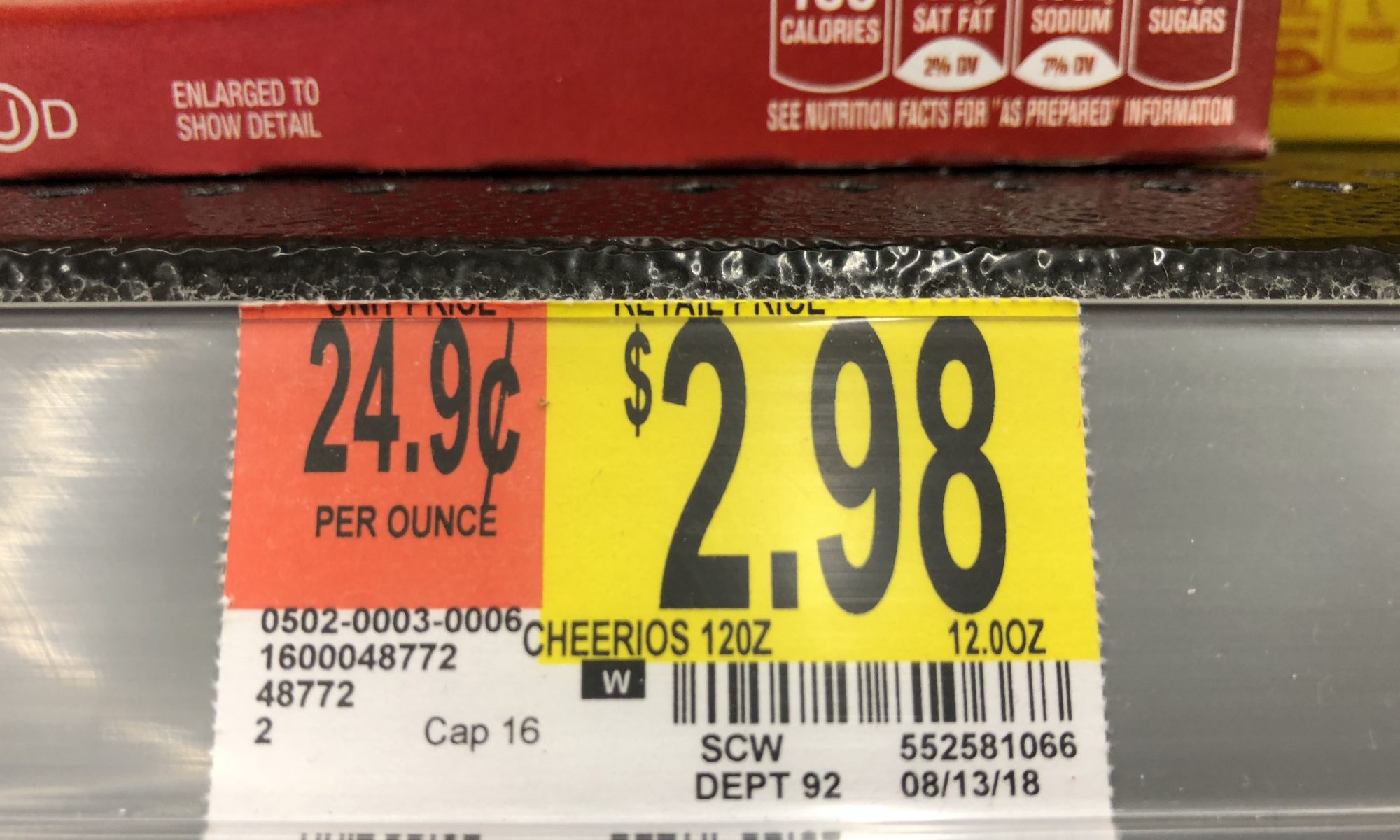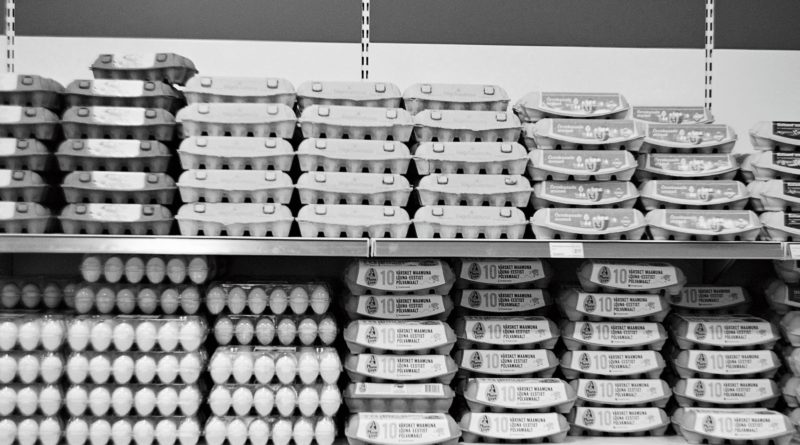How I Spend $125 a Month on Groceries
I like reading a lot of forums dedicated to frugal tips and tricks. Occasionally someone will ask a panicked question about how to stretch $30 or $40 to cover their groceries for a week. This always comes as a surprise to me as that’s exactly what I spend to cover my cheap groceries, which comes out to $1,500 for the entire year. I’m not just buying the cheapest crap in the store either, but making sure I feast on plenty of fruits, veggies, dairy, fish, and the occasional pastry.
“Duh, Darcy! Anyone can spend that little when their workplace BUYS THEM LUNCH!! Bet you weren’t gonna share THAT, were you!!”
I was, just to offer full disclosure. My workplace does, in fact, offer free lunch to their office workers. Since I work remote for the time being, however, I don’t have access to this option. My having a free lunch or not doesn’t actually affect my budget much, as at my last job all I ate for lunch was a peanut butter sandwich. $2 for peanut butter and $2 for a loaf of wheat bread means I just spent $4 for about ten days’ worth of work lunches, or 40 cents per meal. Upgrading didn’t change my budget at all; it just meant I could put that $4 to something else.
But enough about the past; we’re here for the frugal/cheap grocery tips! Here’s everything I do to keep my food costs so low:
Have a Frame of Reference
In my area there’s four grocery stores within walking distance of my apartment. There are several more that are just a short bike ride away, including a great Trader Joe’s. All offer different cheap groceries I can take advantage of, and take advantage I do. Instead of just sticking with the closest store, I have visited every one multiple times to know what their typical prices are for different foods. For example, I will only get Brussels sprouts from Trader Joe’s because they sell them for 99 cents a pound. That’s the only place I’ll get those veggies now. I don’t go every grocery store every single week, but I might visit more than one when I have the time or if I’m looking for a specific deal.
This is also good to do if you’re hoping to see which one has the cheapest groceries overall. The results might surprise you, especially if you never realized you have an amazing Aldi’s or other discount store nearby.
Other folks, however, may not have this choice. Too many Americans live in a food desert, where they may only have one grocery store that’s remotely convenient. If this is the case for you, the Internet is now your second grocery store. Look up what nonperishables you can get off of Amazon, some of which will be cheaper than what you currently buy. Amazon actually surprised me by being cheaper with staples like oatmeal, soup, and granola bars. It’s worth the research!
Know Your Way Around the Store
One of my nearby stores (Stop & Shop) will put out discounted produce when they’re not able to sell some odds and ends; thanks to that I get some great deals, like a pound of strawberries this week for $1. Win. A different store (Shaw’s) has shelving and fridges where they keep discounted frozen foods and dairy products. Another win. I especially like that these stores will put this stuff out at a discount instead of tossing it.
Thing is, I don’t see nearly as many folks taking advantage of these deals as they should. I think this has to do with the way these fridges and shelves are tucked away, not put on display or anywhere that a regular shopper will notice them. The only reason I know about them is because I walked around the aisles and paid attention to what I was seeing. Try it at your local store; if you don’t see a section like that, it won’t hurt to ask a worker. “Do you guys have a discount section for your unsold produce?” is a good way to ask; if you don’t want to be so direct, you can also try “What do you all do with the produce you don’t sell?” and go from there.
Eat Frozen
I had some words on Twitter about eating vegetables from the freezer instead of the produce section. There’s a weird reluctance to eat frozen food instead of the stuff that sits under the fluorescents all day. That is, until I talked with folks about it and learned they like to get “the fresher option”.
BULLSHIT ALERT! If we’re talking freshness, the produce section isn’t always your friend here. Basically, several different fruits and vegetables come in from outside the state and even the country, meaning there’s a lot of time transporting the food from the fields to the grocer. If they pick some of that food at the peak of ripeness, that food will be gross by the time it reaches the store. To mitigate this, farmers will harvest the food while it’s still unripe so it will slowly ripen while in transit.
This can be a hit or miss depending on countless factors, and there’s no guarantee your end result will be ripe, overripe, or underripe. Its level of ripeness actually matters a lot on a nutrition level, as different pieces of produce will contain different nutrients at different times in the ripening process. You can tell from the texture, solidity, and taste; a green banana and a spotted one have very different compositions.
The frozen produce, on the other hand, doesn’t face this issue. Since it’s all immediately frozen anyway, everything is harvested at the peak of perfect ripeness and freshness. In many cases they’re even fresher than the stuff in the “fresh” produce section!
Seriously, Eat Frozen
Frozen food has more of the nutrients you need WHILE being cheaper!! On a regular basis I’ll eat peas, spinach, broccoli, cauliflower, Brussels sprouts, green beans, and whatever else my grocers might have available frozen. And the price for most of these without a special sale? $1.59 per pound.
YEAH, ONE FIFTY NINE. If you’re eating 1/3 a pound of vegetables every day that’s only costing you about fifty cents! WHILE being better for you than their unfrozen counterparts! This is definitely the hill I will die on and this is well-documented for everyone to see.
Seriously – I eat veggies almost every day and almost 100% of it comes from the frozen section. $1.50 per pound versus 2x that or more in the produce section? I know what I’m choosing. https://t.co/KoNpx2RzAa
— Darcy @ We Want Guac 🏦 (@WeWantGuac) February 10, 2020
Other Tips
Definitely optimize what you eat; there’s a happy confluence between saving money and eating phenomenally healthy, and you’re going to find it. If you want a healthy breakfast, for example, eat oatmeal. You can jazz it up with whatever you want, like diced fruit or honey for a sweet meal or mushrooms and caramelized onions for a savory one.
Coupons are normally the go-to advice for cheap groceries, and they definitely have their place. They’re especially useful when the food it’s for is already on sale. I love getting juice for 50 cents or a box of crackers for less than a dollar with coupons! If you have the time and you like using coupons (which I don’t) this can stack up a lot of savings for you. TLC will give you the lowdown if you have any doubts.
Finally, to check out whether something’s a good deal you should check out the cost per pound. That’s not the displayed price, but the price inside of the red or orange box:

If nothing else, it helps you decide whether it’s a good deal or one you’d rather pass on. This also helps visualize whether buying in bulk is better than buying the smaller packets; sometimes buying bulk isn’t the most thrifty option!
What are your ways of keeping costs low at the grocery store?

